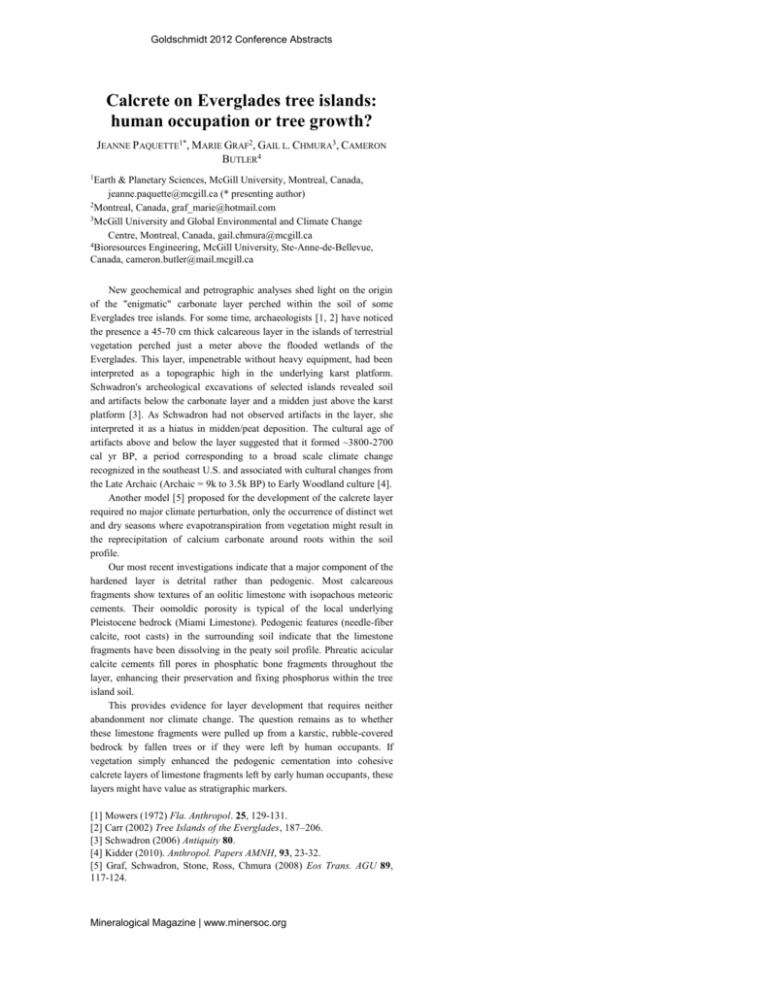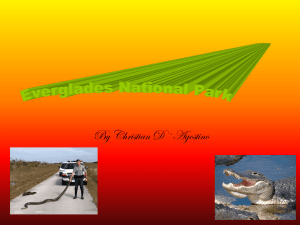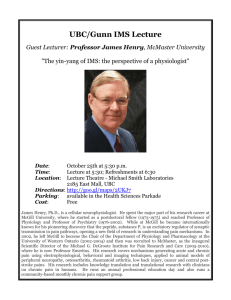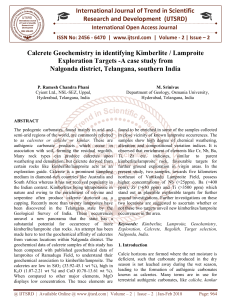4Bioresources Engineering, McGill University, Ste-Anne
advertisement

Goldschmidt 2012 Conference Abstracts Calcrete on Everglades tree islands: human occupation or tree growth? JEANNE PAQUETTE1*, MARIE GRAF2, GAIL L. CHMURA3, CAMERON BUTLER4 1Earth & Planetary Sciences, McGill University, Montreal, Canada, jeanne.paquette@mcgill.ca (* presenting author) 2Montreal, Canada, graf_marie@hotmail.com 3McGill University and Global Environmental and Climate Change Centre, Montreal, Canada, gail.chmura@mcgill.ca 4Bioresources Engineering, McGill University, Ste-Anne-de-Bellevue, Canada, cameron.butler@mail.mcgill.ca New geochemical and petrographic analyses shed light on the origin of the "enigmatic" carbonate layer perched within the soil of some Everglades tree islands. For some time, archaeologists [1, 2] have noticed the presence a 45-70 cm thick calcareous layer in the islands of terrestrial vegetation perched just a meter above the flooded wetlands of the Everglades. This layer, impenetrable without heavy equipment, had been interpreted as a topographic high in the underlying karst platform. Schwadron's archeological excavations of selected islands revealed soil and artifacts below the carbonate layer and a midden just above the karst platform [3]. As Schwadron had not observed artifacts in the layer, she interpreted it as a hiatus in midden/peat deposition. The cultural age of artifacts above and below the layer suggested that it formed ~3800-2700 cal yr BP, a period corresponding to a broad scale climate change recognized in the southeast U.S. and associated with cultural changes from the Late Archaic (Archaic = 9k to 3.5k BP) to Early Woodland culture [4]. Another model [5] proposed for the development of the calcrete layer required no major climate perturbation, only the occurrence of distinct wet and dry seasons where evapotranspiration from vegetation might result in the reprecipitation of calcium carbonate around roots within the soil profile. Our most recent investigations indicate that a major component of the hardened layer is detrital rather than pedogenic. Most calcareous fragments show textures of an oolitic limestone with isopachous meteoric cements. Their oomoldic porosity is typical of the local underlying Pleistocene bedrock (Miami Limestone). Pedogenic features (needle-fiber calcite, root casts) in the surrounding soil indicate that the limestone fragments have been dissolving in the peaty soil profile. Phreatic acicular calcite cements fill pores in phosphatic bone fragments throughout the layer, enhancing their preservation and fixing phosphorus within the tree island soil. This provides evidence for layer development that requires neither abandonment nor climate change. The question remains as to whether these limestone fragments were pulled up from a karstic, rubble-covered bedrock by fallen trees or if they were left by human occupants. If vegetation simply enhanced the pedogenic cementation into cohesive calcrete layers of limestone fragments left by early human occupants, these layers might have value as stratigraphic markers. [1] Mowers (1972) Fla. Anthropol. 25, 129-131. [2] Carr (2002) Tree Islands of the Everglades, 187–206. [3] Schwadron (2006) Antiquity 80. [4] Kidder (2010). Anthropol. Papers AMNH, 93, 23-32. [5] Graf, Schwadron, Stone, Ross, Chmura (2008) Eos Trans. AGU 89, 117-124. Mineralogical Magazine | www.minersoc.org






